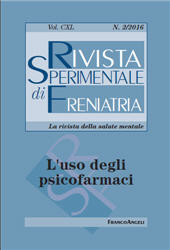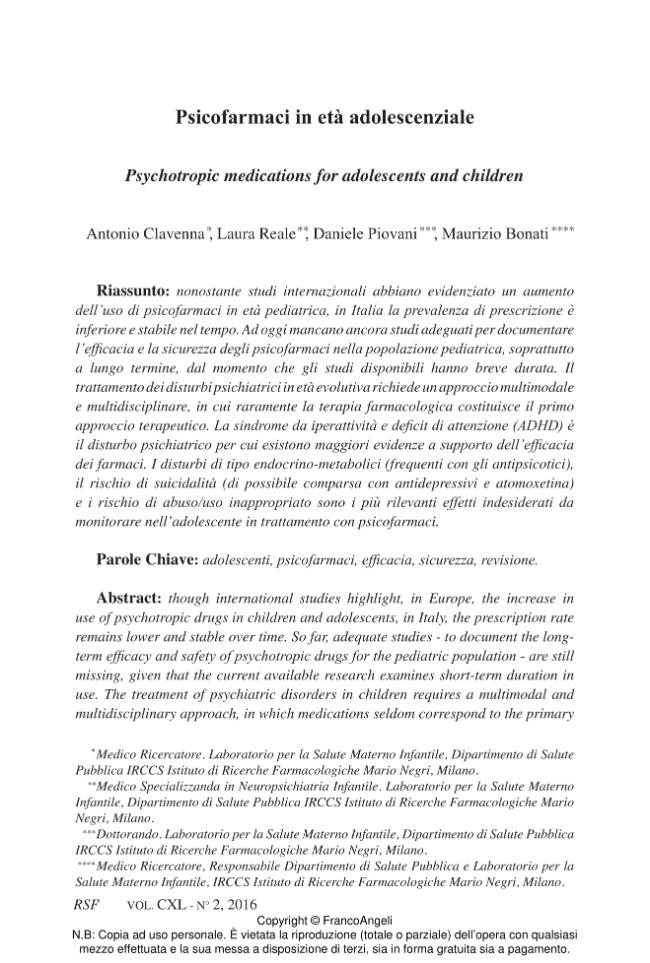Psicofarmaci in età adolescenziale
79-101 p.
Nonostante studi internazionali abbiano evidenziato un aumento dell'uso di psicofarmaci in età pediatrica, in Italia la prevalenza di prescrizione è inferiore e stabile nel tempo. Ad oggi mancano ancora studi adeguati per documentare l'efficacia e la sicurezza degli psicofarmaci nella popolazione pediatrica, soprattutto a lungo termine, dal momento che gli studi disponibili hanno breve durata. Il trattamento dei disturbi psichiatrici in età evolutiva richiede un approccio multimodale e multidisciplinare, in cui raramente la terapia farmacologica costituisce il primo approccio terapeutico. La sindrome da iperattività e deficit di attenzione (ADHD) è il disturbo psichiatrico per cui esistono maggiori evidenze a supporto dell'efficacia dei farmaci. I disturbi di tipo endocrino-metabolici (frequenti con gli antipsicotici), il rischio di suicidalità (di possibile comparsa con antidepressivi e atomoxetina) e i rischio di abuso/uso inappropriato sono i più rilevanti effetti indesiderati da monitorare nell'adolescent
e in trattamento con psicofarmaci.
Though international studies highlight, in Europe, the increase in use of psychotropic drugs in children and adolescents, in Italy, the prescription rate remains lower and stable over time. So far, adequate studies - to document the longterm efficacy and safety of psychotropic drugs for the pediatric population - are still missing, given that the current available research examines short-term duration in use. The treatment of psychiatric disorders in children requires a multimodal and multidisciplinary approach, in which medications seldom correspond to the primary approach for treatment. On the other hand, the studies on ADHD point out the evidence on psychotropic medications' efficacy. Most prescriptions of psychotropic drugs for children and adolescents are considered "off label", i.e. the medications are prescribed in age ranges, dosage and with indications not approved by regulatory authorities. Moreover, children and adolescents taking psychiatric medications, more than adults, may be exposed to higher.
risks of adverse events such as metabolic and endocrine abnormalities associated with second-generation antipsychotic treatments. Data on long-term efficacy and safety of psychiatric medications is essential to help understand the risk-benefit ratio of psychotropic drugs in children and adolescents.
Is part of
Rivista sperimentale di freniatria : la rivista dei servizi di salute mentale : CXL, 2, 2016-
Articles from the same issue (available individually)
-
Information
ISSN: 1972-5582
DISCIPLINES
KEYWORDS
- Adolescenti, psicofarmaci, efficacia, sicurezza, revisione
- Adolescents, psychotropic drugs, efficacy, safety, review



